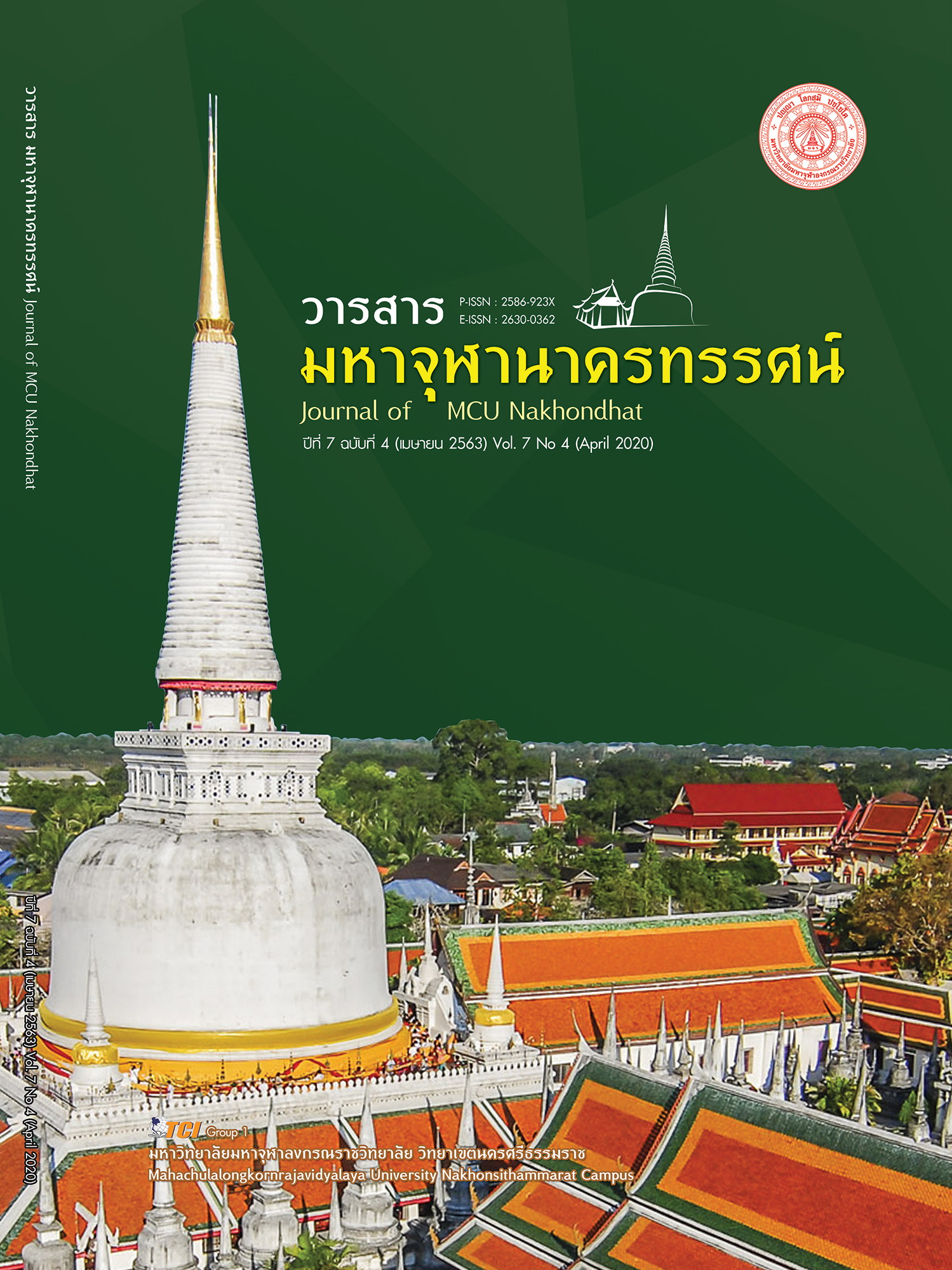AN ANALYTICAL STUDY OF THE USAGE OF SARANIYADHAMMA IN PEACEFUL LIVING OF PADANG BESAR MUNICIPALITY, SONGKHLA PROVINCE
Main Article Content
Abstract
This research entitled “an analytical study of the usage of saraniyadhamma in peaceful Living of padang besar municipality, songkhla province,” focused on three main issues: 1) To study the general conditions of peaceful Living of Padang Besar Municipality, Songkhla Province, 2)To study the principles of the Saranyadhamma that appear in Theravada Buddhist scriptures and 3) To study the guidelines for applying the Saranyadhamma of peaceful Living in the community of Padang Besar Municipality, Songkhla Province Conduct research using qualitative research methods (Qualitative Research) By in – depth interview (In – Depth – Interview) and group discussion.
The results of research were: 1) Padang Besar Municipality Community Founded by Thai people of Chinese descent Do business in The result of the opening of the railway line between Thailand and the Federation of Northern Malayu. Causing the community economy to grow rapidly There are many different types of migration. Since then, there are outsiders who come to live with the original community. Later, it began to appear insulating the problem of cohabitation within the community. The dimension conflicts of opinion among people in the said community. Therefore, the community has a common consensus To recruit leaders that the community agrees about the qualities of the best leaders To become a leader and follower to accept the leadership qualities By evaluating that the community in which everyone lives together is peaceful Set to use the Saranyadhamma as a supplementary element For the communities in which they live to see the value Substance and still have a great benefit. Which is supportive, resulting in the community to have true peace, reconciliation and true reconciliation Forward to make the community sustainable and stable 2) Saraniyadhamma is a principle that is strengthened in the development of the people of peaceful coexistence: 2.1) Mettā – kāyakamma: friendly action 2.2) Mettā – vacīkamma: friendly speech 2.3) Mettā – manokamma: friendly thoughts 2.4) Sādhāraṇa – bhogī: sharing of gains 2.5) Sīla – sāma 11 atā: moral harmony 2.6) Ditthi – sāma11atā: harmony of views Divided into 2 categories 1 for monks group 2 For general or lay Buddhists Both categories of Dharma have the same topics. 3) The result of the application of the principles of the Saranadhamma in peaceful coexistence has created value and created a friendly friend. Causing benefits to the community in many respects, such as the community having images, friendship, honor, and honor Have the same attitude, self – discipline in relation to others in the community With the said content, significance, and benefit Make the community strong and stable, resulting in moral wealth. People in the community are completely humane. According to the Saraniyadhamma is the best principles In the practice of living together in the peace.
Article Details
References
ไพรินทร์ เตชะรินทร์. (2524). การบริหารงานพัฒนาชุมชน. กรุงเทพมหานคร: ไทยวัฒนาพานิช.
การรถไฟแห่งประเทศไทย. (2467). พระราชกิจจานุเบกษา เล่ม 41 หน้า 274 (29 ธันวาคม 2467).
พระพรหมคุณาภรณ์ (ป.อ.ปยุตโต). (2545). สลายความขัดแย้ง ความสำคัญของพระพุทธศาสนาในฐานะศาสนาประจำชาติ. กรุงเทพมหานคร: โรงพิมพ์สหธรรมิก จำกัด.
พระพรหมคุณาภรณ์ (ป.อ.ปยุตฺโต). (2557). ธรรมนูญชีวิต. กรุงเทพมหานคร: กรมการศาสนา สำนักงานพระพุทธศาสนาแห่งชาติ.
ฟื้น ดอกบัว. (2544). ศาสนาเปรียบเทียบ. กรุงเทพมหานคร: โสภณการพิมพ์.
มหาจุฬาลงกรณราชวิทยาลัย. (2535). พระไตรปิฎกฉบับภาษาบาลี ฉบับมหาจุฬาเตปิฏก 2500. กรุงเทพมหานคร: โรงพิมพ์มหาจุฬาลงกรณราชวิทยาลัย.
มหาจุฬาลงกรณราชวิทยาลัย. (2539). พระไตรปิฎกฉบับภาษาบาลี ฉบับมหาจุฬาลงกรณราชวิทยาลัย. กรุงเทพมหานคร: โรงพิมพ์มหาจุฬาลงกรณราชวิทยาลัย.


